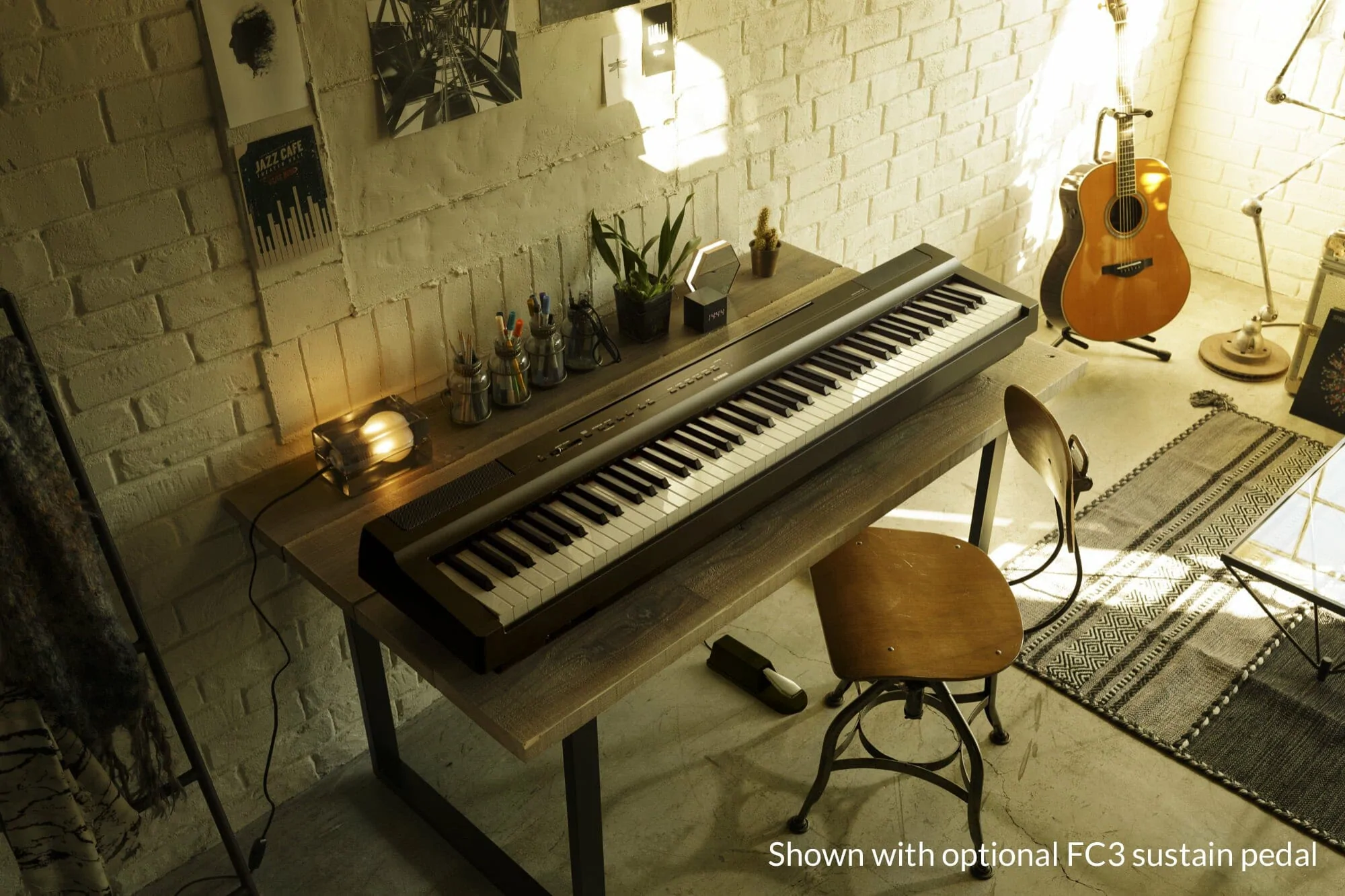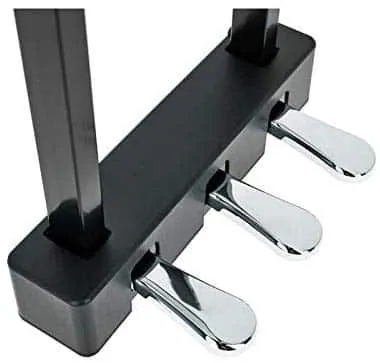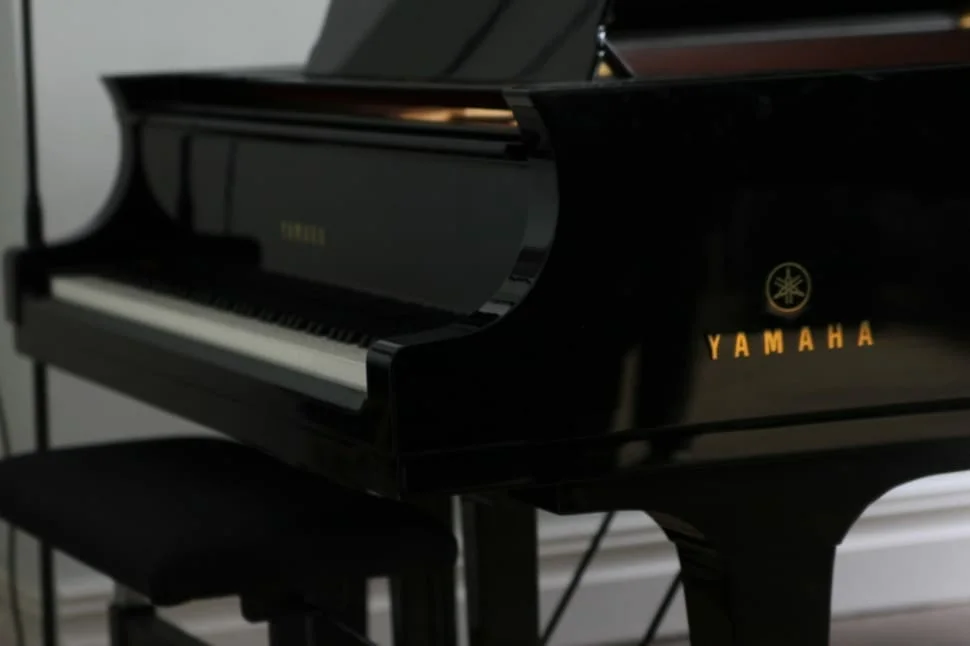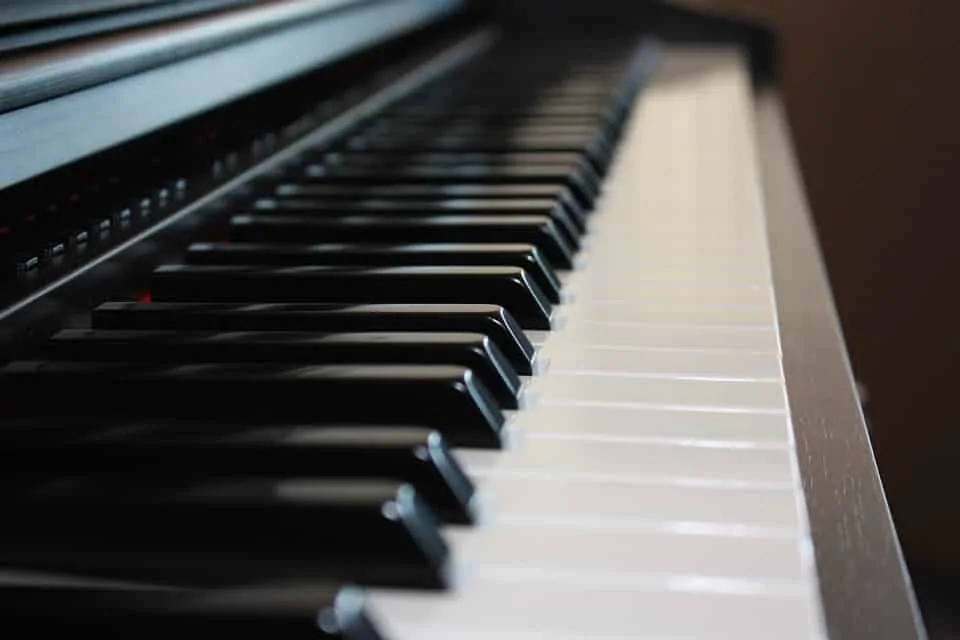If you’re in the market for an entry level digital piano, you’ve probably come across at least one of these two options. Yamaha is one of the most prolific manufacturers of digital pianos, and their range is so extensive that it’s sometimes difficult to choose between the different pianos they make.
Fortunately, sites like mine are here to help. These pianos are in relatively similar price ranges (depending on who you buy from) but the feature set couldn’t be more different. Worried that you might choose the wrong piano? Read on and find out which one is right for you.
Which one is best?
We break down the pros and cons of the P45 and P125.
Yamaha P125
Our Rating: 4.5/5
Yamaha P45
Our Rating: 3.5/5
Overall Recommendation
For 99% of pianists we recommend the Yamaha P125. The features that are missing on the P45 mean that it isn’t worth the price saving. The difference between these two pianos can be as little as $100 and as a result, in our opinion it’s worth saving up the extra money to get the P125.
If you really can’t stretch to the price of the P125, the P45 will serve you well; after all, it’s a Yamaha. However, be prepared to accept the limitations, and realise that if you take the piano seriously, you’ll need to look at replacing it within two or three years as you progress.
Specification Lists
Yamaha p125 specifications
Yamaha P45 Specifications
The details: why the Yamaha P125 is the better choice
Feature Set

Winner: Yamaha P125
Let’s start out by talking about the feature set. We’ve been through the specification lists, but what exactly makes the P125 the winner here? Why does it beat out the P45?
Polyphony
Firstly, a big issue. The P45 features only 64 note polyphony, while the P125 features 192 note polyphony. Polyphony refers to the number of notes you can play at the same time. You may think you can only play ten notes at once, because you only have ten fingers, but that’s not the case.
You see, when you use the pedal, each note you hold down counts towards your polyphony. So if you play a three note chord and hold it with the pedal, and then play another three note chord, you have six sounds at the same time, even though your fingers are only playing three notes.
This can present problems, for example, if you play really thickly textured music that requires lots of pedal use. It’s pretty easy to hit 64 notes of polyphony in this case.

What’s more, if you’re using layer mode, or playing a duet, this further eats into your polyphony. If you hit the polyphony limit of your piano, you might start noticing notes getting cut off, which is no good for your music making.
The Yamaha P125’s 192 note polyphony means that you’ll very rarely, if ever, hit the limit, even if you have lots of pedal, lots of notes going on at the same time or if you’re playing with someone else. You’ll find that the P45 very easily hits this limit, and when I tested it for my review, I found that lots of notes got cut off. Not good.
For a more in-depth explanation of polyphony and why it’s important, have a look at this article I wrote.
Connections
The Yamaha P125 wins this one hands down. Not only do you get the connections you’d expect; the power plug and a sustain switch jack, but you also get a jack for a full three-pedal unit that makes the P125 just like a real piano. You also get AUX OUT, which allows you to plug the P125 into a PA system (great if you play gigs regularly) and USB to Host, which allows you to hook your piano up to a computer and use it with something like Garageband or Sibelius.
I wish I could say the P45 was as versatile, but unfortunately it just isn’t. You only really get the power plug and the sustain switch jack. You don’t get any way to hook it up to a speaker system. In my opinion this makes it useless for gigging, because you won’t want to rely on the P45’s puny 12W speaker system.

The other thing that sets the P125 apart is that it includes two headphone jacks. This is perfect for duet playing, or for teaching. The Yamaha P45 only includes one, and I really can’t understand why. This makes it much more difficult to use the P45 for duet playing or teaching.
Recording
This will be a quick one. The P45 offers no recording function at all. This is rare in the digital piano world; most of the pianos I’ve tested and reviewed offer some way to record your own playing. The P45 does not, which is a real disappointment, and this alone would be enough to put me off buying one. I say to my students all the time that recording yourself play and listening back to it is a really great way to identify where you’re going wrong and improve. You can’t do this with the P45.
The P125 features two-track recording, which is really the minimum I’d expect from a digital piano in this day and age. However, because you can connect it to your computer, you can use something like Garageband to record to your heart’s content.
Modes
Let’s look at the number of modes you get. This is important not only for music making, but can be very important for teaching and learning the piano. The Yamaha P45 features two modes, and the P125 features three. Not only do you get duo mode and layer mode on the P125 as you do with the P45, but you also get split mode, which allows you to split the piano down the middle and play one voice with your left hand and another with your right.
If you’re a composer, or want to do any type of your own music making and want to experiment with different voices, then the P125 is the easy choice, as the P45 will limit your creativity.
Pedals
We’ve touched on this briefly, but I’ll mention it again because I think it’s important. You can connect both a sustain switch and a full three-pedal unit to the P125. This is really important in my opinion, because it allows a student to graduate from using no pedal at all, to just the sustain pedal, to all three pedals. This means it’ll last you through your piano learning journey.

The P45 only allows you to plug in a sustain switch, and not a three pedal unit. This means you’re going to be really stunted in your music learning journey; as soon as it comes time to use any of the other pedals beside the sustain pedal, you’ll need to look at upgrading your piano.
Sound

Winner: Yamaha P125
The P125 wins out again in the sound category, but this is mainly due to the upgraded sampling technology, increased number of included voices and the better speakers. However, if you want to look at the piano sound, the samples sound pretty much the same: they’ve all been taken from the Yamaha CFX III Concert Grand piano.
Included Voices
The Yamaha P125 includes 24 voices, in six different sections. You get a selection of piano sounds, electric piano sounds, other keyboards (harpsichord, vibraphone, clavichord), an organ section, string section and choir section. As you’d expect from Yamaha, these sounds are all of high quality.

The P45 includes high quality sounds, but only 10 of them. For most players this won’t be a huge deal, as the piano sound on both models is of high quality, but at the same time if you’re a composer or you like to use different sounds, you might find the P45 limiting.
Sound Technology
This is what sets the P125 apart from the P45. This is partly due to the fact that the P125 is newer, but there are other subtleties that make the P125 the better choice in this regard.
The P125 features the Yamaha Pure CF sound engine, with damper resonance and intelligent acoustic control. Yamaha have redeveloped the software that is responsible for generating their piano sounds, and the result is a much more refined and expressive sound.
The P45 uses Yamaha’s old sound engine, called AWM Sampling. This is a perfectly adequate sound engine, but it definitely feels a lot more digital than the CF sound engine you get on the P125. The P125 feels very natural to play; almost like a real piano, and the P45 doesn’t quite have that same level of nuance.
Speakers
Not much to report here. The speakers on both models aren’t great, in all honesty. The difference is that on the Yamaha P45 you get 12W of power and on the P125 you get 14W of power. I couldn’t hear much difference when I tested these models side by side.
What I will say is that the speakers on both models are good quality, without any kind of crackling or distortion when you turn the volume up to max. However, for a better experience, you’ll want to use headphones, which thankfully both the P125 and P45 allow you to do.
Keys and action


Winner: TIE
We’ve given lots of points to the P125 so far, so this is an area where the P45 begins to match the P125. While the vast majority of the P125’s specifications are an upgrade over the P45, one area that remains the same are the keys and action. This is actually a plus for the P45, as you get the same piano action experience for a lower price.
Keys
The keys on both models are plastic. This is to be expected at this price point, and in all honesty isn’t a bad thing. The keys are nicely weighted and absorb moisture well. They’re not quite as nice to play as some of Yamaha’s more expensive models, but they’re pretty close.
As you might expect, the keys are graded, meaning they’re lighter in the treble and heavier in the bass, just like a real piano. For anyone upgrading from a cheap keyboard, or even someone looking for a spare for their acoustic piano, both the P125 and P45’s are perfectly adequate.
Action
Both the P45 and the P125 use the Yamaha Graded Hammer Standard action. This action has been the go-to in all Yamaha’s pianos and keyboards around this price point for the last ten years. In all honesty, it’s dated, and needs an upgrade, but it’s perfectly fine for the beginner or intermediate pianist. Both the P45 and P125 have the exact same action; you’ll have the same piano playing experience whichever one you pick.

One thing to note; you may find a lot of nasty things said online about the Graded Hammer Standard action. Some people really don’t think it’s very good at all. I can empathise to a point, as I think offerings from Casio or Kawai at this price point are better (but that’s an article for another day), there is nothing wrong with the GHS, and it’s perfectly adequate for most beginner to intermediate pianists.
Price

Winner: Yamaha P45
A point for the P45 here. If we’re looking solely at price, the P45 is definitely the winner here. The usual price point for the P125 is about $200 more expensive than the P45. This isn’t a huge amount of money in digital piano terms, but it’s enough so that if your absolute maximum budget allows for the P45 and not the P125, the P45 will probably be your choice.
However, depending on the part of the world you live in, the price gap between the two models may be smaller; I’ve also seen the P125 on sale, where the price gap between the two models is only around $100. This makes the P125 more tempting, but the fact remains that if budget is your primary concern, the P45 is your best bet.
Value for Money

Winner: Yamaha P125
While the P45 is the cheaper model, I think what you get for your extra $100 or $200 makes the extra expense worth it. I think any serious pianist is going to limit themselves by choosing the P45, as the feature set you get for the price isn’t great. The P125, on the other hand, includes much more features for not much extra money.
Build Quality


Winner: TIE
Not much to report in this final section; both the P125 and P45 are made by Yamaha, one of the most renowned and reliable digital piano manufacturers. As a result, you can be sure that both models are built to the highest specification and will last for years to come.
Yamaha have been making digital pianos since the 1980s, and there are certainly models that have been around since then and are giving excellent service to this day. You should have no qualms about buying a Yamaha product; they are built exceptionally well and are very hardwearing instruments.
Final Scores
Yamaha P125
3 points
Yamaha P45
1 point
Tie
2 points
Winner: Yamaha P125
If you’re serious about your piano playing, the P125 is the better buy. Considering the extra features you get for not much extra money, it begs the question why anyone would buy the P45 instead, unless money was the concern. That being said, you could pick up a used P125 for around the same price as the P45, and it would be the better buy.
Having said this, the P45 is a good piano in it’s own right, but it’s a dated model, and there are pianos by other manufacturers offering much more than what the P45 does. This is something you can read more about in my full Yamaha P45 review.
Final verdict; the Yamaha P125 is the better buy.

Very interesting information!Perfect just what I was looking for!